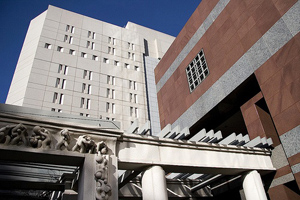New Technologies Tested to Save Electricity Costs
 WASHINGTON — The U.S. General Services Administration (GSA) has announced new technologies as part of its innovative program to reduce energy-use in federal buildings. These technologies have significant savings potential if widely implemented.
WASHINGTON — The U.S. General Services Administration (GSA) has announced new technologies as part of its innovative program to reduce energy-use in federal buildings. These technologies have significant savings potential if widely implemented.
The Green Proving Ground Program aims to drive innovation in environmental performance in federal buildings and help lead market transformation through deployment of new technologies, according to the GSA.
The new technologies include responsive lighting systems and plug load control. Both technologies were tested and evaluated to determine energy-saving potential.
“This innovative program is another example of GSA leading the way for the federal government,” said Dorothy Robyn, commissioner of GSA’s Public Building Service in a statement. “By testing the effectiveness of these technologies, GSA is finding new ways that federal buildings across the nation can save both energy and taxpayer dollars.”
While lighting typically accounts for 39 percent of electricity costs, the new responsive lighting technology could save federal buildings money. In order to test the theory, the responsive lighting technology was implemented in five federal buildings in California and Nevada that represented a diverse set of agencies, occupancy patterns, work styles and lighting. The GSA found the results to show energy savings that ranged from 27 to 63 percent over baseline conditions, depending on the workspace’s normal use.
The responsive lighting system consisted of a workstation-specific (WS) lighting system, dimmable ballasts, occupancy sensors at WS luminaries, and a Lighting Management Control System (LMCS) that coordinated these components, according to the GSA.
Also, during testing and evaluation, the GSA found that simple payback for one of the sites — a call center at the Roybal Federal Building, was calculated to be less than seven years. The GSA also noted that the lighting is an emerging technology, and costs are expected to decline with increased market penetration, which would reduce simple payback under all circumstances.
Another technology that was recently tested was a plug load control system that evaluated advanced power strips. The study was conducted throughout eight GSA buildings in the mid-Atlantic region. The power strips save energy by controlling plug-in devices according to a schedule or based on a given device crossing a power threshold.
The results found that the use of the scheduled timer control, which was the most successful of the three control strategies, resulted in an average energy savings of 48 percent. The largest savings were achieved when scheduled timer controls were applied to devices that were powered 24/7. Printers and copiers were among these devices, as were kitchen appliances, such as coffee makers and water coolers, according to the GSA.
“Plug loads are an increasingly large portion of building energy profiles. Managing those loads is key to making federal building energy-efficient,” said John Remis, facility services manager at the Richmond Federal Building, in a statement.
The technologies for the Green Proving Ground Program are divided into five categories: building envelope, HVAC/energy management, lighting, on-site power generation and water. There are currently a total of 16 technologies throughout the five categories being tested under the program.
